One of the great benefits of the publication, in recent years, of new archive material from the Irish revolutionary period is the availability of the accounts of members of Cumann na mBan, the women’s organisation which played a much overlooked but very integral role in the War of Independence a century ago. Among the archive material which has become more publicly accessible in recent years, thanks to the work of the staff of the Military Archives at Cathal Brugha Barracks in Dublin, are their first-hand accounts from the women who were involved in this seminal period in our history, often written in their own hand.
The benefit of having the accounts of these women – especially the details contained in their applications for service pensions in later years – is that we can now knit together a more comprehensive story of the extraordinary efforts which many women went to in supporting the IRA campaign against the forces of the Crown particularly in 1919-1921. They also provide us with intricate detail and fascinating insights into the activities of ordinary Cumann na mBan members who frequently put their safety and their lives at risk in pursuit of their objectives.
As with many aspects of this turbulent period in Irish history, the popular refrain heard from many families and the descendants of these women is that ‘they didn’t talk about it’ in the years after. This was not universal but in countless cases, and for many obvious reasons, participants in the events which led to the birth of the Irish state felt it necessary to confine what happened in the past to the past. Now thanks to the accounts we have from so many of the women who joined Cumann na mBan, we can learn more about their often understated role, we can read about what they did and why, and we can hear their voices through their testimonies and correspondence about the traumatic and turbulent events in which they took part.
One of those women was Annie Cronin from my home parish and whose story I came to research when writing a book about the Ballymacandy Ambush which took place between Milltown and Castlemaine in County Kerry on 1 June 1921. Hers is a story, in many ways, which is typical of the activities of the rank and file of Cumann na mBan during the conflict of 1919-21 but so many aspects of her life, and her ambition to play her part in the fight for Irish independence, I decided, needed and deserved to be shared with a wider audience.
Annie J. Cronin was born on 6 May 1901, one of eight children of John and Anne Cronin. The family lived on a farm in the townland of Brackhill on the banks of the River Maine and which was part of the mid-Kerry parish of Milltown. Like many members of Cumann na mBan, Annie, often known as ‘Sis’, was born into a family steeped in republicanism and the fight for Irish independence. Four of Cronin’s brothers were involved in the IRA and were on the run at various stages. The most senior figure among them was James (Jimmy Cronin) who became immersed in the armed struggle and was a key player in incidents including the Ballymacandy Ambush of June 1921 which occurred a short distance from his home.
For a small rural townland, Brackhill was something of a hotbed of Volunteer and IRA activity in the years before and during the War of Independence and was home to leading local IRA members including Dan Mulvihill – whose sisters were all in Cumann na mBan – and John (Jack) Flynn, who would later serve as a Fianna Fáil TD. At the age of just 12 years, Annie joined the Milltown ‘A’ Company of Cumann na mBan, part of the 5th Battalion of the Kerry No. Brigade. She rose through the ranks to become company treasurer. The Milltown Company was a large and active company which was part of the 6th Battalion of the Kerry No. 2 Brigade. The company, which had some forty members, was under the leadership of Kathy Healy and May Allman of Rockfield – May was a sister of Daniel Allman who was killed in the Headford Junction ambush of 1921.
In the years before and during the War of Independence, along with her comrades, Annie Cronin attended first aid classes conducted by the local doctor, Daniel Sheehan. Sheehan was a medical officer with the Kerry No. 1 Brigade of the IRA. His father, Jeremiah D Sheehan had been a Member of Parliament for East Kerry between 1885 and 1895. Throughout 1918 and 1919, Cronin was also involved in carrying dispatches and intelligence work and, with other members of the organisation, she made haversacks and provided food and accommodation for IRA members trying to evade the clutches of the police. She was also involved in organising fundraising dances to support the IRA campaign. Cronin recounted how she regularly hid ammunition including a bomb under turf in an outhouse and in a dugout near her home which was often raided by the Black and Tans during the War of Independence. In her pension application many years later, Annie explained that she also:
Kept J Flynn TD, Paddy Sullivan, Bill Wade (R.I.P), in my home at various times to Truce. Kept arms and ammunition dumped in outhouse under turf. Looked after my brother, member of Kerry No. 2 Brigade Column who got smashed up in a trench while on duty in April 1921.
Annie and her comrades also catered for Liam Lynch, Officer Commanding of the First Southern Division, the most senior figure in the IRA in the south of Ireland during the conflict. He was on a tour of Kerry in the spring of 1921 and attended a meeting of local leaders at the home of Cronin’s neighbour, Dan Mulvihill. The Cronins ‘had them for dinner the day of their departure.’ Annie Cronin was one of the first members of Cumann na mBan at the scene of Ballymacandy ambush which took place on the main road between Milltown and Castlemaine on 1 June 1921 and in which four RIC members and one Black and Tan were killed. She tended to the wounded and the dying as well as the only IRA injured party, Jerry Myles from Tralee who was taken away to Glencar to recover.
During the Truce between the end of the War of Independence in July 1921 and the outbreak of the Civil War in June 1922, there may have been a cessation of hostilities but Annie Cronin and her fellow members of Cumann na mBan remained as active as ever. Like the IRA itself, Cumann na mBan divided over the Treaty and Annie took the anti-Treaty side. In anticipation of a possible resumption of the war while the Treaty negotiations were underway, IRA members continued to train, drill and prepare ammunition. Cronin was among those who worked on developing a training camp at Kilburn House near Milltown and she catered for the men who were there. She also carried arms and dispatches ahead of an anti-Treaty IRA assault on Killorglin in September 1922. Among the many injured she looked after were Bertie Scully of the Glencar Company and Edward Langford of Callinafercy.
Cronin recounts that she was twice arrested by Free State soldiers in 1922 and held in Tralee for several weeks. On one occasion, she was arrested with Molly Myles, a prominent Cumann na mBan member from Tralee and a sister of Jerry Myles, who was injured at Ballymacandy. During 1922-23, according to the Military Archives:
[Annie Cronin] hid arms in the dump in the pit about a field away from her house. She put in the arms there – about half a dozen shotguns, some revolvers and ammunition. She looked after the dump when her brothers were away, which occurred often, as they were attached to a column and were continually on the run. She handed out guns when called for. She brought ammunition in a parcel from her house to Mulvihill’s half a mile away. She brought about a pound’s worth of ammunition from a Free State soldier in Castlemaine for John Flynn.
In the closing days of the Civil War in 1923, the Cronin homestead was ‘raided every night.’ Ahead of an attack on the Free State post in Castlemaine in January 1923, she looked after fifty men. Her brother, Jimmy, was jailed and went on hunger strike ahead of his release in January 1924.
Like many members of Cumann na mBan, Annie Cronin applied to the Department of Defence for a service pension in the 1930s. In seeking to meet the criteria for her military service pension, Cronin applied to the Department of Defence for a Service Certificate in 1936. Among her nominated referees were the Fianna Fáil TDs and Old IRA veterans, Tom McEllistrim and Timothy ‘Chub’ O’Connor as well as Denis Quirke, Milltown, Thomas O’Connor, Killorglin, and fellow members of the A Company of Cumann na mBan. Tom McEllistrim wrote to the Department wrote that ‘her home was a recognised place to which important IRA dispatches were sent and were later forwarded by Miss Cronin to their proper destination.’
Cronin’s Civil War involvement was not initially accepted as part of her claim and on appeal, like other applicants going through the process, she was required to give evidence to an investigating officer in 1942. She was eventually awarded a special allowance in 1943 for over two years’ service. Cronin was also awarded a pension of £77 per annum in 1965. Again, supporting documentation was required and Dr Eamon ‘Bunny’ Sheehan, son of Dr Dan Sheehan, submitted a medical report to the Department which concluded that she was unfit for work because of physical ailments including arthritis. An itemised list of the amount of milk supplied by her brother, John, to Castlemaine Creamery for the previous year was also required to fully assess her means.
The pension payment was reduced however when Cronin became eligible for the statutory old age pension in 1971 and upon the sale of the Cronin family farm at Brackhill in 1973, the Special Allowance she had been awarded in 1943 was terminated by the department, despite representations by local TDs John O’Leary and Timothy ‘Chub’ O’Connor who raised the matter with the Minister for Defence, Paddy Cooney. Annie Cronin died on 30 July 1984 at Carrigoran House nursing home in Newmarket on Fergus in County Clare.
My forthcoming book on the Ballymacandy Ambush will be published shortly. More information here: Anatomy of an Ambush: Ballymacandy 1921 (Publishing April 2021) – Owen O’Shea
(I am grateful to Annie Cronin’s relatives for sharing the photograph shared above.)


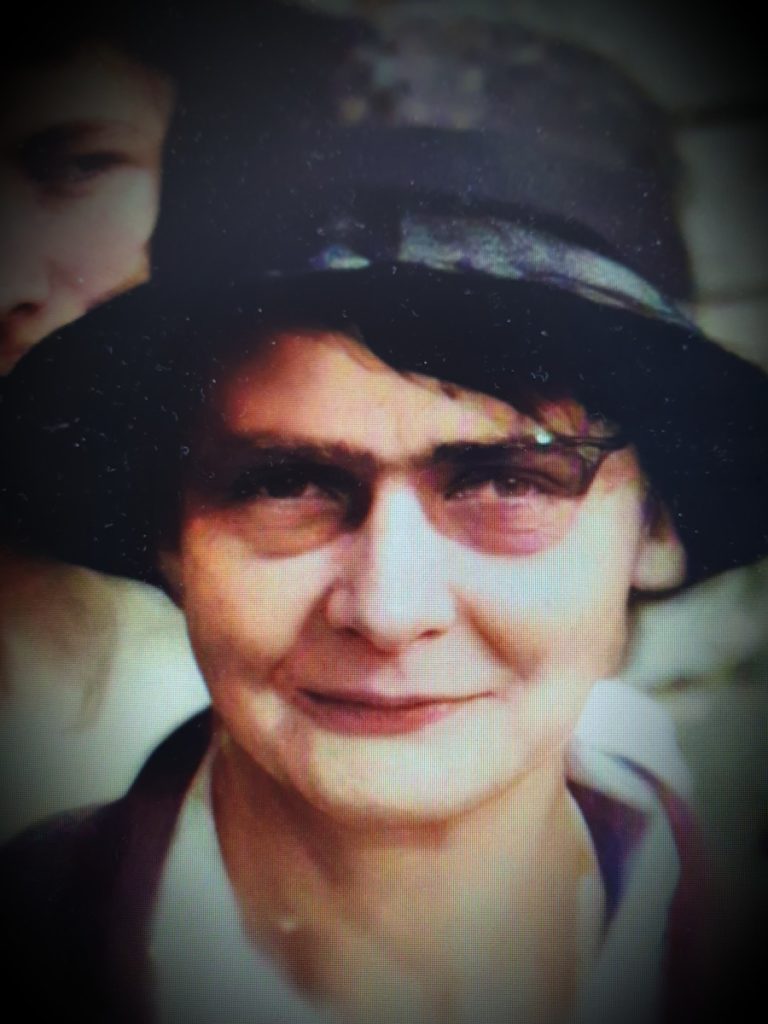

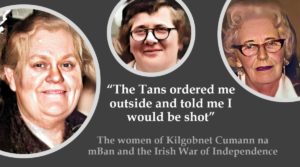
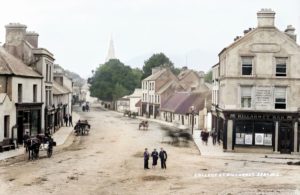
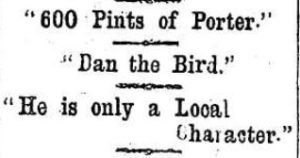
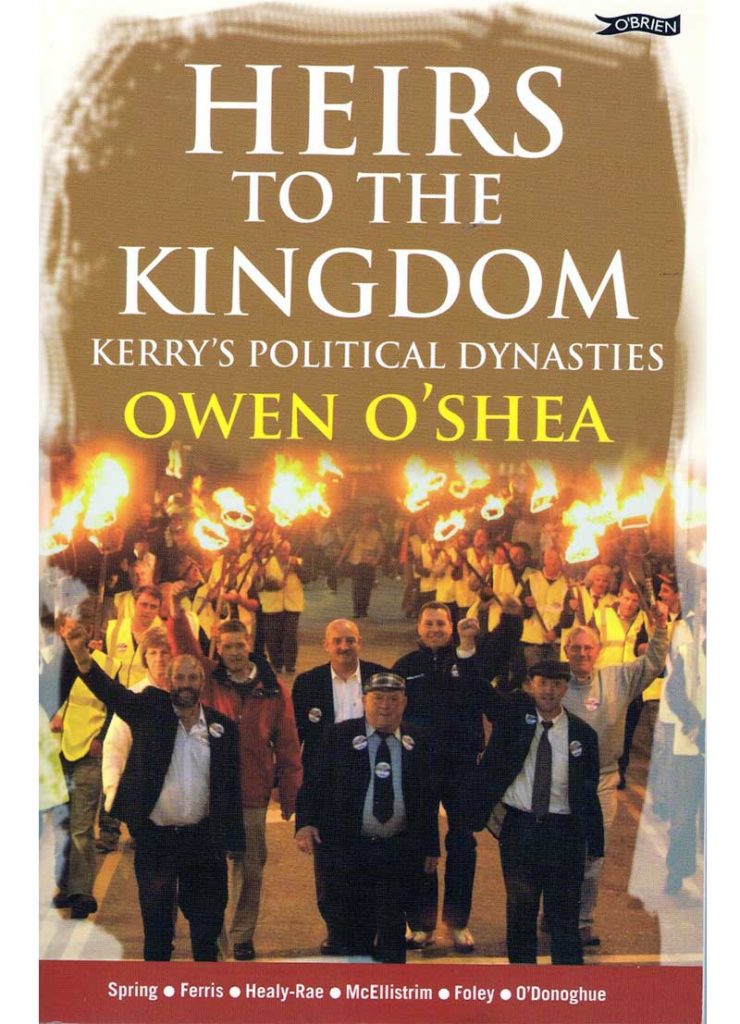
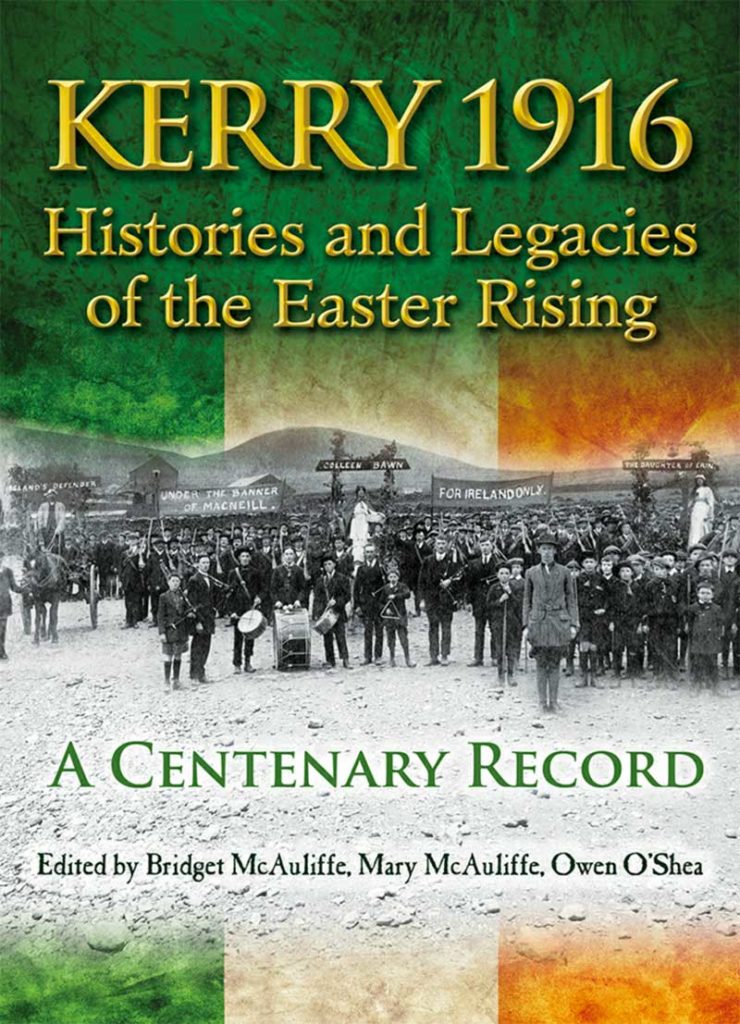

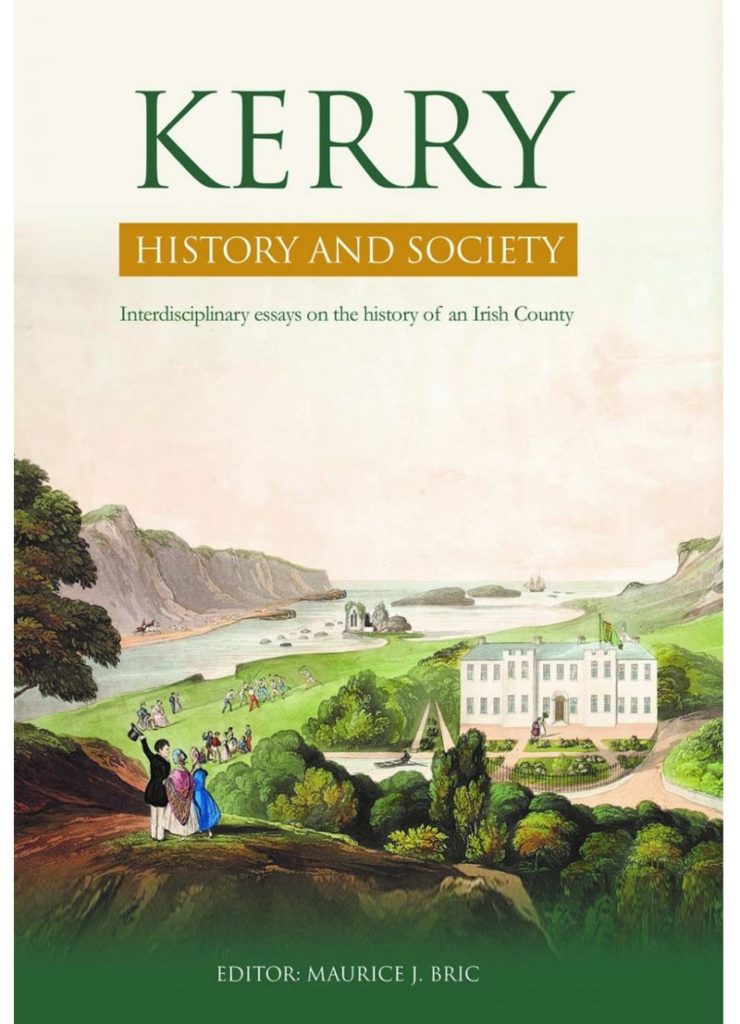
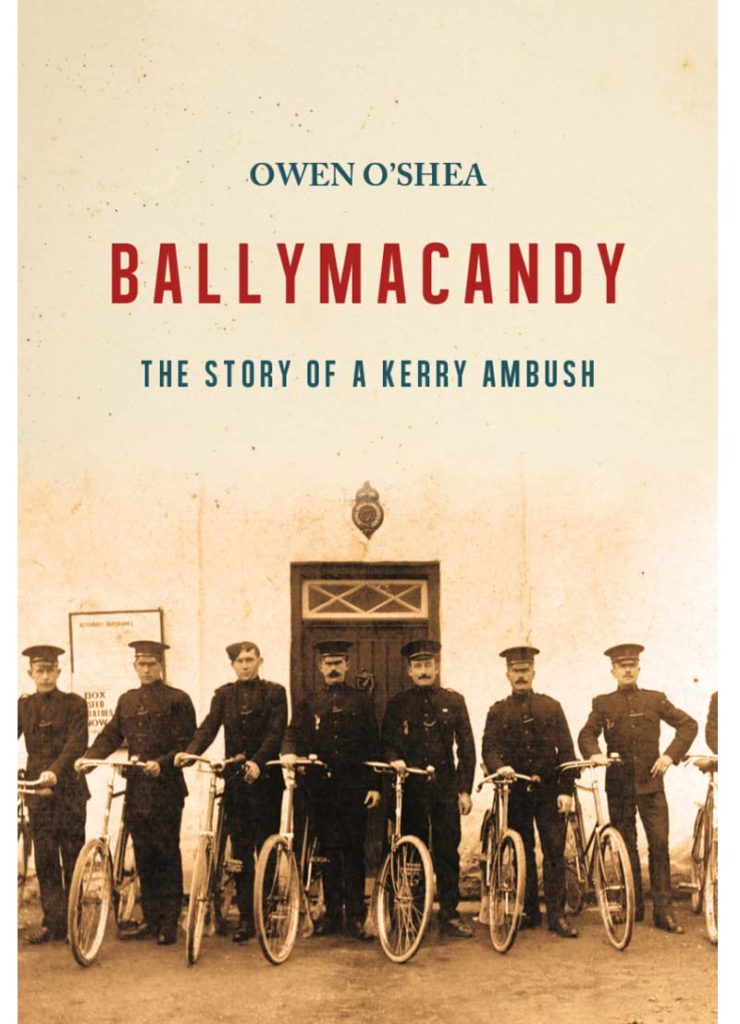
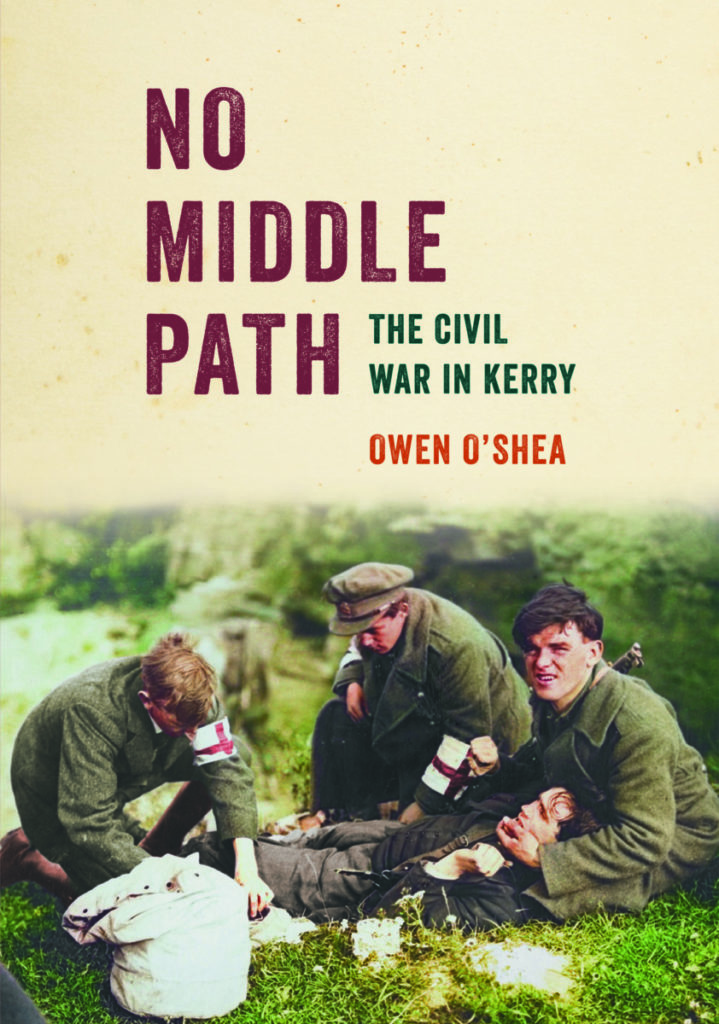
I’m really looking forward to reading your latest publication covering the Ballymacandy Ambush. Amelia Mason (Wade) is my Great Aunt. Her sister Christina Marren (Wade) is my Grandmother. RIP both. Chriss kept her Cuban na mBan commitment secret, to the grave. A woman of inpenetrable mystery. We have her medal but not had knowledge of it’s historical context, until very recently when I did a search at irishgenealogy.ie & found postings on your pages. Well what a jaw-dropping surprise! So Owen O’Shea after so many years , a life-time, of our unknowing, you are our now our unofficial Wade & people of Kerry family historian. I’ve learnt so much in this last month Thank You!! I’m getting my order in for the book.